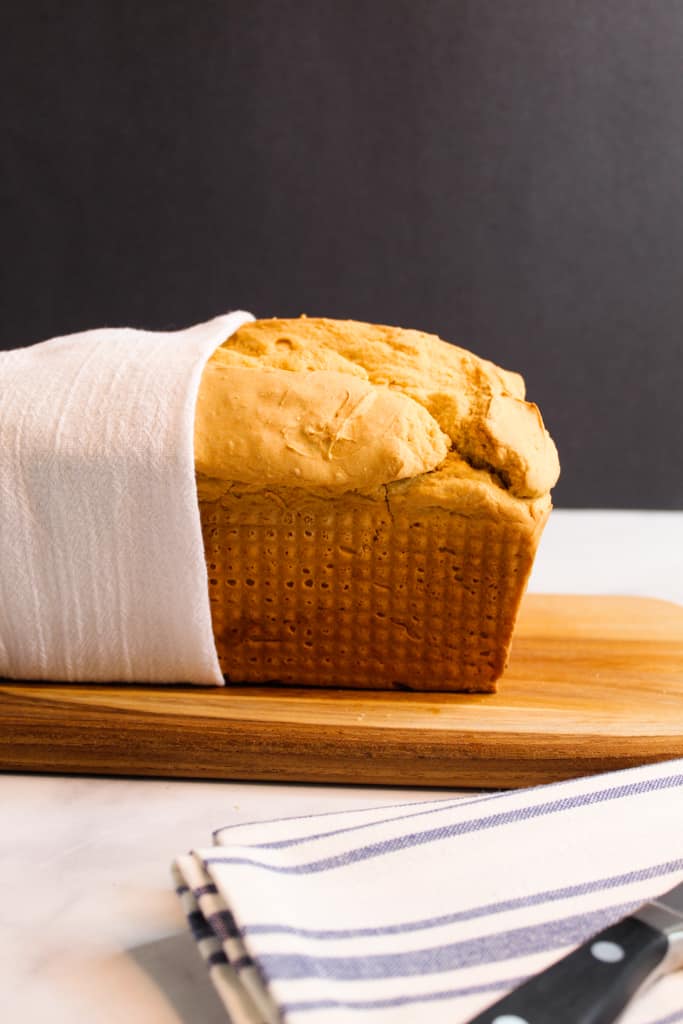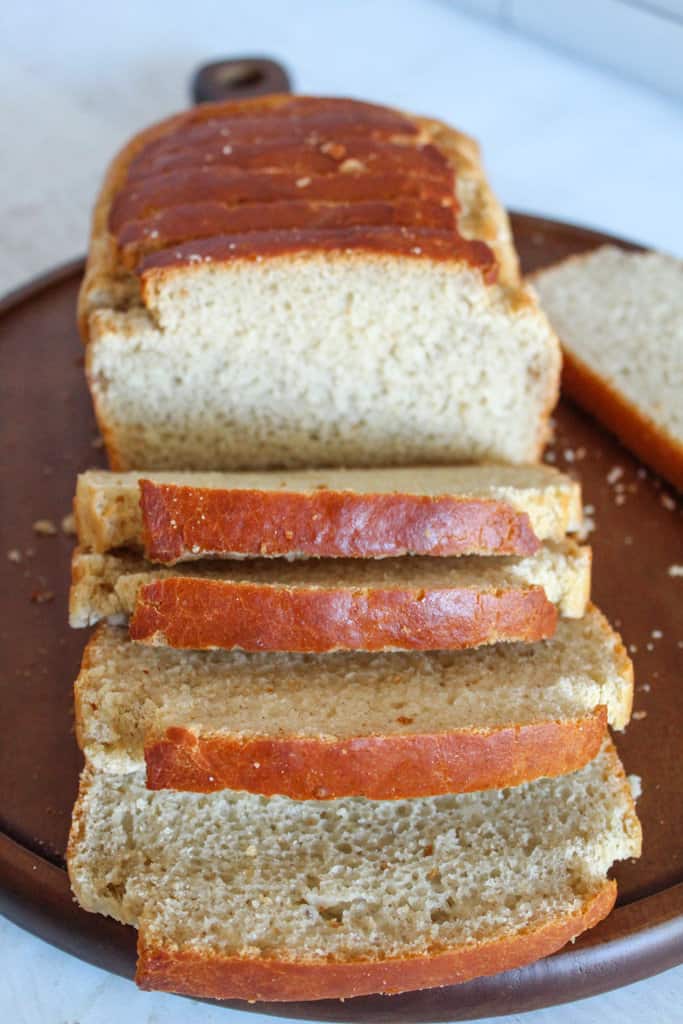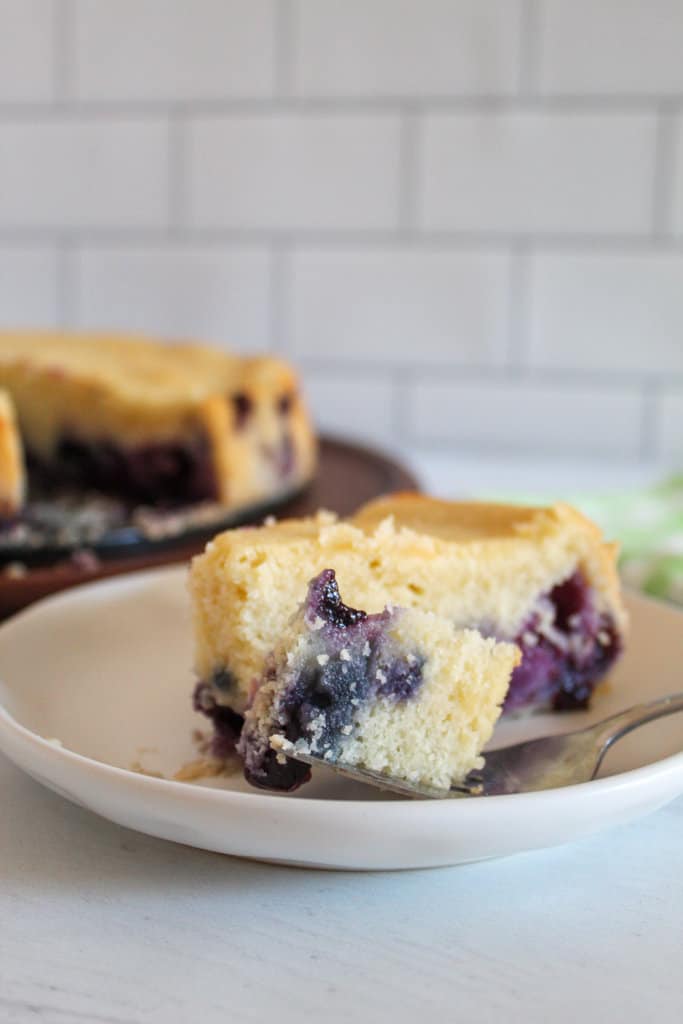Is Xanthan Gum a Substitute for Baking Powder?
Baking powder is one of the many essential baking staples. It helps your wet mixture double in volume and gives your final product that coveted light texture!
So what do you do then if you run out of baking powder? Can you use xanthan gum as a baking powder substitute?
Table of Contents
Let’s explore these two ingredients to find out how they work and if it’s as simple as swapping one for the other!
What exactly is baking powder?

Ever wonder why or how your dough rises?
Well, that wonderful rise is brought about by the action of leavening agents and baking powder is one of them.
Baking powder has two components, an acid (cream of tartar or sodium aluminum sulfate) and a base (sodium bicarbonate).
With one component missing, expect a difference (not good) in your baked good’s texture.
Regardless of the type of baking powder, it produces carbon dioxide (seen as bubbles), which is responsible for why your bread becomes flaky and chewy!
And without it, expect to munch on a flat and crispy bread that’s tough to eat!
Types of baking powder
There are two types of baking powder, single-acting and double-acting baking powder.
Single-acting baking powder makes your bread rise as soon as your dry and wet ingredients combine. So if using this type, you’d want to bake right after mixing so the bubbles don’t disappear.
On the other hand, commercial, double-acting baking powder, as the name suggests, leavens your bread twice–once when your ingredients get wet and then when exposed to heat during baking.
One thing to note, baking powder does contain starch. And some brands have starch that’s been sourced from wheat. Thankfully, with improved food labeling, you can easily find brands that use rice in wheat’s place. Clabber Girl is an example of a gluten free brand.
What is xanthan gum?

Because our baked goods are free of gluten, they don’t have that ‘glue’ that gives them texture and substance. Xanthan gum, and other alternative binders, functions as a replacement for gluten. Without it, our beloved baked goods would crumble and fall apart before even attempting to pick it up.
But with a bit of xanthan gum and mixing–miraculously, gluten-free versions of these snacks are do-able!
So, what exactly is xanthan gum?
Although it doesn’t sound like a natural product, xanthan gum is a NATURAL polysaccharide gum that results from the fermentation of corn sugar (glucose and others) by the bacteria Xanthomonas Campestris.
After purifying and drying, the miracle that is xanthan gum (in powder form), as we know it, is formed.
You can also find xanthan gum in ice cream, salad dressings, and more. Many of my recipes use it, like this blueberry cobbler and these breadsticks.
Xanthan gum and baking
It’s frustrating when you can’t find a REAL gluten-free yeast bread that’s not bad tasting or dense and crumbly. (Check out this exceptionally delicious gluten free white bread made without xanthan gum!)
But xanthan gum makes this possible. Once wet, xanthan gum turns sticky and gelatinous.
It also acts as an emulsifier, meaning it helps water and oil combine.
As a result, it binds, thickens, and stabilizes the dough or batter’s components.
In short, it mimics what gluten does.
But wait, there’s more!
Imagine your dough or batter has small pockets. And as your leavening agent releases carbon dioxide, these pockets will hold them. In short, xanthan gum helps trap air inside your dough.
So, instead of getting a flat as a crepe bread, you’ll get a baked treat that has a structure (or has a good rise) like regular loaves of bread. This sandwich bread is an example!
Snacks with xanthan gum also tend to have a longer shelf life than those that don’t.
Like the baking powder, you’ll only need a small amount of xanthan gum for all these “tricks” to work.

What can I use in place of xanthan gum?
Although manufacturers assure people of the effectiveness of the Xanthomonas Campestris in fermenting corn sugars, some people find gums upset their stomachs.
No need to worry, though, because you can use the following xanthan gum alternatives:
- Psyllium Fiber (Psyllium Husk Powder)
- Chia Seeds
- Ground Flax Seeds (Flax Seed Meal)
- Gelatin
- Agar-Agar
- Konjac Powder
Xanthan gum and baking powder
Sure, xanthan gum, like baking powder, helps gluten-free goods achieve the chewy texture of normal (with gluten) treats.
BUT xanthan gum alone cannot act as a leavening agent – which is what baking powder mainly does.
What you can do, though, is use a leavening agent (e.g., yeast) with xanthan gum.
When a recipe calls for a leavening agent (and you don’t have a pinch of baking powder), here are some alternatives:
- Whipped egg whites (for pancakes)
- Vinegar combined with baking soda (for cookies)
- Cream of tartar with baking soda
- Yogurt (for waffles)
- Buttermilk
- Ginger beer
- Unpasteurized beer with live yeast
- Use self-rising flour
PRO-TIP: Note that not all gluten free baked goods need xanthan gum. Something with runny or pourable batter, like pancakes or crepes, might not need any gum added.
Also, to avoid having a gummy or rubbery final product, make sure not to add xanthan gum more than what’s specified in the recipe!
Check out these recipes
Waffles, cookies, breads and rolls!
Make your day extra special with this breakfast favorite! Serve these waffles with fruit and syrup. Enjoy!
These classic cookies will make you believe that gluten-free ones can be delicious too! And that homemade ones are better than store brought cookies!
Gluten-Free Rice Flour White Bread for the Bread Machine
No kneading required! This recipe is so easy to make. Even amateur bakers can put it together without hassle! Yet the final product is tasty and equally satisfying than typical bread.
Very Best Gluten Free Dairy Free Dinner Rolls
The perfect way to enjoy these tasty and yeasty dinner rolls is with friends and family! It’s so good that even your friends who aren’t a fan of gluten-free baked goods will surely love these rolls!
Gluten-Free Dairy-Free Italian Bread
If you’re looking for a delicious and melt-in-your-mouth gluten-free Italian bread, look no further. This loaf of bread is infused with the richness of Italian herbs everyone loves.
FAQ’s
A lot! It also acts as an emulsifier, meaning it helps water and oil combine.
As a result, it binds, thickens, and stabilizes the dough or batter’s components.
In short, it mimics what gluten does.
Baking powder is responsible for that flakey, wonderfully textured biscuit we all know and love! It’s a leavening agent that helps breads (even those without yeast), rise higher.
Not necessarily. Many muffin and quick bread recipes don’t need it as the eggs or additional ingredients like bananas help bind everything together. Thin batters like pancakes can usually skip it as well.
Unfortunately no, the two are similar but not a one-for-one substitute. Xanthan gum acts as a binding agent to give baked goods texture and keep them from crumbling (see the section on what xanthan gum does in baking); baking powder is a leavening agent that helps baked goods rise high and keeps them fluffy. Both play a crucial role in gluten free baking.
Yes! You can make your single-acting baking powder. Simply mix two parts of cream of tartar with one part of baking soda. Make a small batch and store excess in an airtight container (in a cool, dry place). Note that baking powder loses its leavening ability when it absorbs moisture.
PRO TIP: Use your newly opened baking powder within four to six months. The longer it sits, the less effective it becomes.
Bottomline
Leavening agents are essential components for baking. They help the dough rise by releasing carbon dioxide. And xanthan gum traps that air inside your dough. They work in harmony.
During baking, the gas escapes leaving behind a nice, fluffy texture for your breads, rolls and other baked goods.
Now that you know what baking powder and xanthan gum do during baking, let’s get baking – Below are 15 recipes to get started with!



